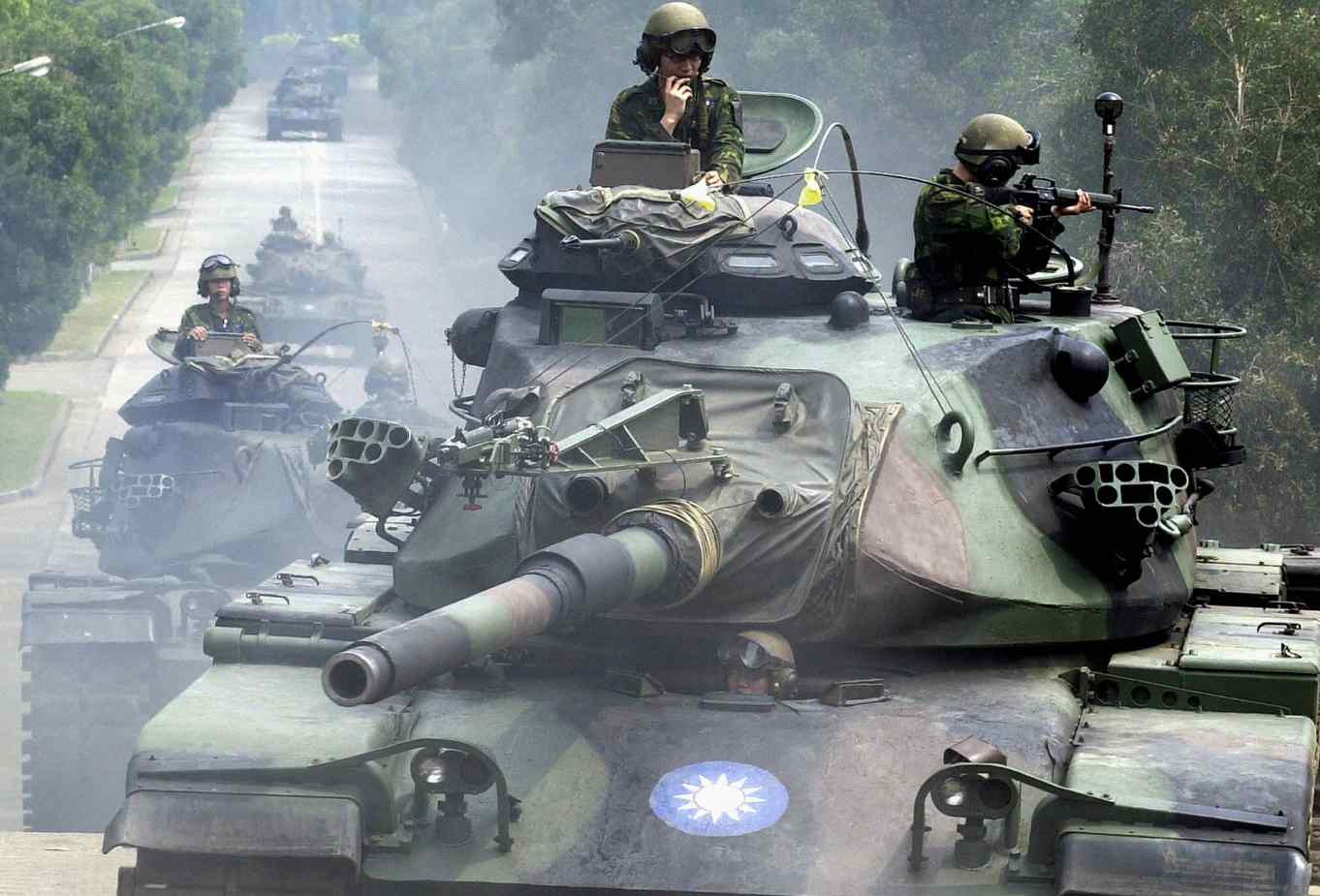Taiwan is seeking to upgrade its aging US-origin Cold War-era M-60A3 main battle tanks by installing new engines. This is part of a broader effort to modernize the entire fleet of its legacy armor by outfitting new electronics and fire control systems to thwart a Chinese amphibious land invasion.
According to reports from the island, Taipei will go for an American offer to replace the 400 tanks’ current AVDS-1790-2C engines with the more powerful AVDS-1790-8CR power plants, which will aid digital and mobility enhancements to be more relevant on the battlefield.
The tanks, however, represent larger chronic obsolescence within the Republic of China (RoC) army’s land systems, with old armor and artillery systems, as noted by Western media reports.
The expected arrival of 108 American Abrams tanks over the next three years is a silver lining. But, experts still raise the relevance of tanks in a theater that primarily holds naval and air warfare, where the People’s Republic of China (PRC) military is admittedly superior.
New Engines for Old Tanks
According to Liberty Times, the 400 M-60A3 has nearly reached the end of its service life this year, and Taipai had ordered an equal number of engines from the US to keep the tanks functional.
However, the US offered the AVDS 1790-8CR engines with a 1,050 horsepower (HP) capacity, compared to the 750-hp AVDS-1790-2C, a 300-HP increase.
“The AVDS-1790-2C engine has problems with disappearing business sources and cannot meet the armor protection weight required for future tank performance improvements. The previously reported plan was to order more than 400 engines of the same type (between) 2023 to 2028,” Liberty Times reported.

The new engines are more or less the same shape and size as the original, which would eliminate any installation and integration issues. Greater engine power also offers more electric supply for new electronics, fire control systems, and targeting devices Taiwan plans to install.
Taiwan’s Tank Inventory
The Taiwanese army has a fleet of 1,000 tanks, including 460 M-60A3s, 400 CM-11s, and 250 CM-12s. M-60A3s represent an essential element of Taiwan’s tank fleet. The tank was produced in the US and first went into service in 1959.
It has since undergone continuous modification and enhancement. The M60 still operates in seventeen nations, illustrating the design’s robustness. Fifteen thousand tanks were manufactured, with the upgraded M60A1 being the most popular because of its improved ammo storage solution and thicker armor. But, the US military retired these tanks between 1994 and 1997.
Recent exercises also proved the need for more modern tanks and upgrades for older ones. The 586th Armored Brigade recently conducted a live-fire test with “combined tactics” like “concentrated fire and split” maneuvers. The wording suggests maneuver warfare that involved armored and infantry units rapidly changing positions and shifting locations with agility.
Such ‘maneuver warfare’ requires robust engines that can withstand the pressures of rapid ground movements in cross-country terrain, which strains the tanks’ electronics and power supply. “The American original manufacturer believes that it can provide the weight required for future armor protection, as well as improve cross-country capabilities and increase shooting stability while traveling,” the report added.
Too Late & Too Little
However, the upgrade program will likely run into several supply chain and logistical issues, given that neither the tanks nor the engines are manufactured in Taiwan.
Moreover, the new engines will not be delivered immediately, as by then, the People’s Liberation Army (PLA) and the PLA Navy will have added more capabilities, like the commissioning of additional Type 075 Landing Platform Docks (LPD). These can transport more armor to Taiwanese shores apart from the other amphibious vessels and civilian roll-on/roll-over (RoRo) ships that would be pressed into service.
The Abrams tanks, too, have a staggered delivery schedule, with 38 tanks expected to arrive in 2024, 42 tanks in 2025, and 28 tanks in 2026, as per the US$2.2 billion acquisition.
A November 6 report on the BBC said: “The island is woefully under-prepared for a Chinese attack. Taiwan’s army has hundreds of aging battle tanks but too few modern, light missile systems. Its army command structure, tactics, and doctrine haven’t been updated in half a century. Many front-line units have only 60% of the manpower they should have.”
Is Tank Warfare Relevant In The Pacific?
A previous EurAsian Times analysis has shown that land warfare systems in a Taiwan scenario would come into play when Chinese armor lands on the beaches and begins creeping into Taiwanese jungles and cities.
The PLAAF and the PLAN would first use their overwhelming technological and numerical lead in destroying the RoCN navy and air force, singularly leaving the land forces to face an attack without complementing naval and air strength.
Moreover, PLAN operates off Taiwan’s eastern shores with aircraft carriers and warships. This has nullified Taipei’s original plan to retreat into its eastern mountains and keep fighting a siege from there.
- The author can be reached at satamp@gmail.com
- Follow EurAsian Times on Google News




